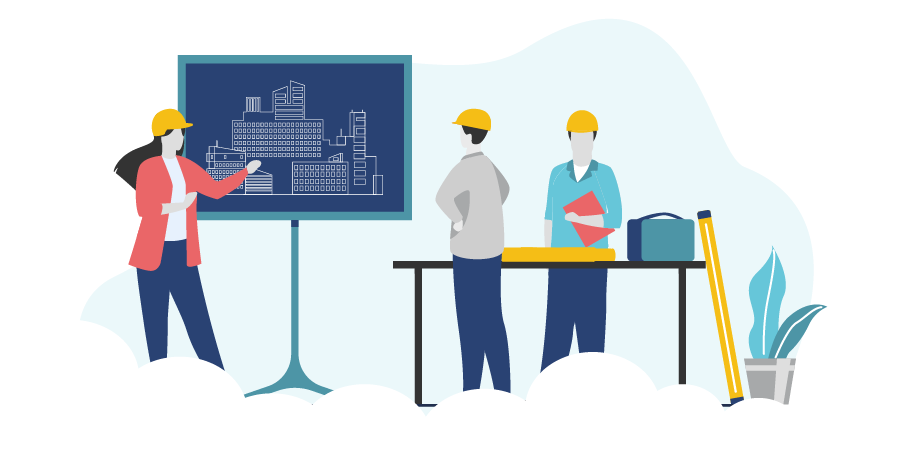3 Common Engineering Mistakes—and How You Can Avoid Them
April 19, 2022

Engineering is a demanding profession. No matter how hard you try to secure a good outcome, things rarely go 100% according to plan. Maybe you were misled by a subcontractor. Maybe the weather just wasn’t on your side. Or maybe you made a mistake.

But in your line of work, even a single miscalculation can have devastating consequences. And while not every engineering failure leads to damage or injury, small errors here and there can still compromise a project and cause you massive losses in time, money, and reputation if your client decides to sue.
To help you reduce the risk of a lawsuit, we’ve listed three of the most common engineering mistakes—and the best practices to avoid them.
Disclaimer: Please note the information provided herein offers guidelines only and is presented from a liability-based perspective to help you avoid insurance claims. It is not exhaustive and should not take the place of legal advice, nor will it apply to all businesses, settings, and circumstances. For specialized guidance, please consult a lawyer or a licensed insurance representative.
1. (Only) Sticking to the Code
THE RISK:
While building codes offer minimum standards of construction, they’re ambiguous, open to interpretation, and rarely specific to the project at hand. Here’s an example: you’re designing a multi-use commercial building. Some of the building will be office space, but the first few floors will be occupied by an auto dealership. If you only stick to the building code, the recommended floor joists might be too weak to support the weight of the cars.
If there was an incident, the courts would hold you liable, even if you were code-compliant. Why? As an Engineer, the court entrusts you to a higher standard of duty, particularly when it’s a matter of public safety. That means you’re responsible for using your professional discretion to exceed the code and consider the full environment of the project during the design process.
PRO Tips:
Code compliance is the bare minimum—don’t lose sight of the bigger picture. Try to account for as many internal and external factors as you can. In addition to the building code, be sure to design to the use and/or application of the structure so that it can withstand anticipated loads and is safe for all occupants. Document all conversations regarding the building’s use, any materials recommended, decisions made, and your rationale.
RELATED: Here’s Why an Engineer Might Get Sued and What You Can Do About It
2. Poor Communication Between Project Stakeholders
THE RISK:
With so many parties involved in a given construction project, the chances of misinterpreted, dropped, or forgotten communications are high. Some people may put off difficult conversations until it’s too late. Others might opt to go over key changes in a sidebar with another stakeholder, but forget to bring everyone else up to speed.
Miscommunications are rarely intentional or malicious, especially if the stakeholder in question doesn’t think their changes will impact anyone else. But even a small adjustment could create new safety concerns or throw the entire job off course. What if a client requests new lighting fixtures and the contractor installs them without consulting with you? When you visit the site, you realize that the ceiling isn’t strong enough to support the fixtures. Now, the contractor has to take them down and put up new lights, which may cost the client even more.
PRO Tips:
Hold regular constructability review meetings with all major stakeholders (designers, contractors, consultants, the client, etc.) to go over the project. This way, you can identify and address any potential defects, provide feedback on changes that may affect your work, and prevent delays and cost overruns. Plus, you can plan ahead and determine what stage individual team members should collaborate with one another (i.e. contractors can alert you before important areas are to be hidden from view so there is sufficient time for field reviews).
The frequency of the meetings will depend on the scope of the job. Be sure to take minutes for all meetings and share them with everyone involved. Note the time, date, and main discussion points, such as next steps and assigned responsibilities.
3. Poor Internal Peer Review Processes
THE RISK:
Most firms conduct internal peer reviews to catch design flaws and errors. But what happens when the process breaks down? After all, every Engineer has their hands full with their own projects. Who has the time to go over another set of drawings? Without consistent guidelines, team members might be more likely to take shortcuts during the review process or “box-check” and review on autopilot.
On the flip side, how do you find the right balance between having a review process and not getting bogged down in it? Say your firm has a seasoned Engineer with over 30 years of experience. As an industry veteran, they can offer valuable insights on key compliance, quality assurance, and budget issues. But that could also mean they’re in high demand for design work. Do you stick them with all of the reviews, or bill their time on new projects? Keep in mind: someone more senior likely has a higher hourly rate, making them a valuable billable resource.
PRO Tips:
Take a tiered approach to the peer review process, with criteria for different levels of review based on project characteristics. For instance, a feasibility study for a small building under four storeys won’t need the same degree of review as a massive condo complex or a bridge.
Differentiate between what constitutes a light, medium, or in-depth review and define roles and responsibilities accordingly. Have a minimum set of requirements, including documentation and follow-up protocols, to ensure consistency, sound engineering rigor, and that the work is correct, complete, and suitable for the intended application.
Need guidance?
Errors are inevitable in the design process. But even if you never make a mistake, a client doesn’t always need grounds to sue. As long as they believe you’re at fault, they can take you to court. That’s where Professional Liability Insurance comes in. It’ll defend you and your business from allegations of errors, omissions, or negligence committed within the scope of your profession as an Engineer. It’ll also cover your legal expenses, administrative costs, court settlements, and more even if the claims made against you are groundless.
To learn more about Engineering claims and how you can protect yourself, connect with PROLINK. With over 40 years of experience, a licensed broker like PROLINK can help you navigate industry trends and adopt a proactive approach to risk management to control your costs long-term. Our dedicated team of risk advisors will help you:
- Identify exposures based on your business operations and engineering discipline;
- Share what steps others in your industry are taking and advise you accordingly;
- Conduct a robust assessment of your existing insurance policies to detect any coverage gaps;
- Secure a comprehensive solution that aligns with your unique needs and strategic objectives.
Connect with PROLINK today for more!
PROLINK’s blog posts are general in nature. They do not take into account your personal objectives or financial situation and are not a substitute for professional advice. The specific terms of your policy will always apply. We bear no responsibility for the accuracy, legality, or timeliness of any external content.




